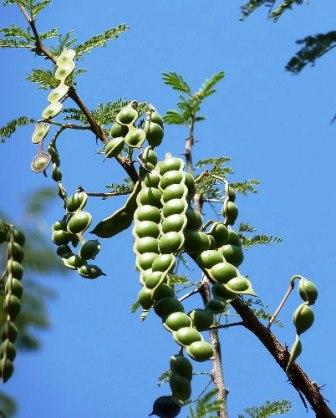Acacia nilotica ,

|
|
Vachellia nilotica Common Names: Acacia, Egyptian Mimosa, Gum Arabic
Tree, Thorn Mimosa Scientific
Classification Kingdom: Plantae Phylum: Tracheophyta Class: Magnoliopsida Order: Fabales Family: Fabaceae Genus: Vachellia Species: V. nilotica Synonyms: Acacia adansonii Guill. & Perr., Acacia arabica (Lam.) Willd., Acacia arabica var. cupressiformis J. Stewart, Acacia arabica var. indica Benth., Acacia arabica var. kraussiana Benth., Acacia arabica var. tomentosa Benth., Acacia benthamii Rochebr., Acacia nilotica subsp. adansonii (Guill. & Perr.)
Brenan, Acacia scorpioides (L.) W. Wight, Acacia subalata Vatke, Acacia vera Willd., Mimosa adstringens Schumach. & Thonn., Mimosa arabica Lam., Mimosa nilotica L., Mimosa scorpioides L., Vachellia nilotica (L.) P.J.H. Hurter & Mabb. Morphological Description Vachellia nilotica, commonly known as Acacia or Egyptian Mimosa, is a perennial tree,
typically growing 5–20 m tall, occasionally reaching 25 m. Its key features
include: · Bark: Dark grey to black, fissured, exuding reddish gum when
slashed, revealing grey-pinkish inner layers · Spines: Thin, straight, light grey, in axillary pairs (3–12 pairs,
5–7.5 cm long) in young trees; mature trees often thornless · Leaves: Bipinnate, with 3–6 pairs of pinnae, each bearing 10–30
pairs of leaflets, 2–5 mm long, green · Flowers: Bright golden-yellow, in globular heads, 1.2–1.5 cm in
diameter, fragrant · Fruit: Strongly constricted, hairy, white-grey pods, 7–15 cm long,
1–2 cm wide, softly tomentose, containing 8–12 seeds Distribution and Habitat Vachellia nilotica is native to tropical and subtropical regions, spanning
Egypt, the Maghreb, Sahel, East Africa (south to Mozambique and KwaZulu-Natal),
the Arabian Peninsula, and the Indian subcontinent to Myanmar. It has
naturalized in Zanzibar, Australia, and parts of the Americas, often becoming
invasive. It thrives in: · Ecosystems: Savannas, dry forests, riverbanks, floodplains, and
grasslands · Climate: Tropical to subtropical, with rainfall of 250–1,500 mm
annually and temperatures of 15–40°C · Soils: Sandy to clayey, tolerating saline and alkaline conditions · Altitude: Sea level to 2,000 m Ethnopharmacology Vachellia nilotica (formerly Acacia
nilotica), commonly known as gum arabic tree, babul, or thorn mimosa, is a
well-known medicinal plant extensively used in traditional medicine across
Africa, Asia, and the Middle East. Its bark, pods, leaves, gum, and seeds
possess a wide range of medicinal properties, including antibacterial,
antiviral, antifungal, antidiabetic, anti-inflammatory, astringent,
antioxidant, and antimalarial effects. Traditionally, it is used to treat
diarrhea, dysentery, coughs, fevers, skin diseases, wounds, sore throat,
toothache, and gonorrhea. The bark and pods are particularly valued for their
high tannin content, which contributes to their strong astringent and
antimicrobial action. The gum exudate is also used as a soothing agent in cases
of inflammation or irritation of mucous membranes. Phytochemical studies have
identified key constituents such as flavonoids, saponins, alkaloids, tannins,
and gallic acid derivatives. Despite its extensive traditional use and
pharmacological promise, more standardized clinical trials are needed to fully
confirm its efficacy and safety in modern medicine. · Antioxidant
Activity: Extracts exhibit
significant free radical scavenging properties, aiding in the prevention of
oxidative stress-related diseases (Jame, 2018). · Antimicrobial
Effects: The plant demonstrates
broad-spectrum antibacterial and antifungal activities, making it useful in
treating infections (Jame, 2018). · Anti-inflammatory
and Analgesic Properties:
Studies confirm its efficacy in reducing inflammation and pain, supporting its
traditional use in treating rheumatism and related conditions (Jame, 2018). · Antidiabetic
Potential: Extracts have shown
hypoglycemic effects in experimental models, indicating potential benefits in
managing diabetes (Jame, 2018). · Anticancer
Activity: Certain compounds
isolated from the plant have demonstrated cytotoxic effects against various
cancer cell lines (Hafez et al., 2024). · Antiviral
Properties: Research indicates
efficacy against several viruses, suggesting potential as an antiviral agent
(Ahovègbé et al., 2021). ⚠ Toxicity Profile: While
Vachellia nilotica is generally considered safe at traditional dosage levels,
some studies have reported potential hepatotoxic effects at higher doses. In
sub-acute toxicity studies, repeated administration of doses above 250 mg/kg
body weight in rats led to elevated liver enzymes, indicating possible liver
stress. No nephrotoxic effects were observed. Therefore, caution is advised,
and monitoring of liver function is recommended during prolonged use (Alli et
al., 2015). Additional Uses · Forage and Fodder: Leaves and pods serve as fodder for
livestock, particularly in dry seasons, though high tannin content requires
moderation. · Tannin Production: Bark and pods, containing up to 20%
tannins, are used in leather tanning and dyeing in Nigeria and India. · Wood Utilization: The hard, durable wood is used for tool
handles, boat construction, furniture, and fuelwood across its range. · Environmental Impact: In Australia and Zanzibar, its invasive
spread disrupts native ecosystems, facilitated by livestock seed dispersal;
control measures include mechanical removal. References
External Links More Pictures |
|
| Compounds of Acacia nilotica , | |
| References |